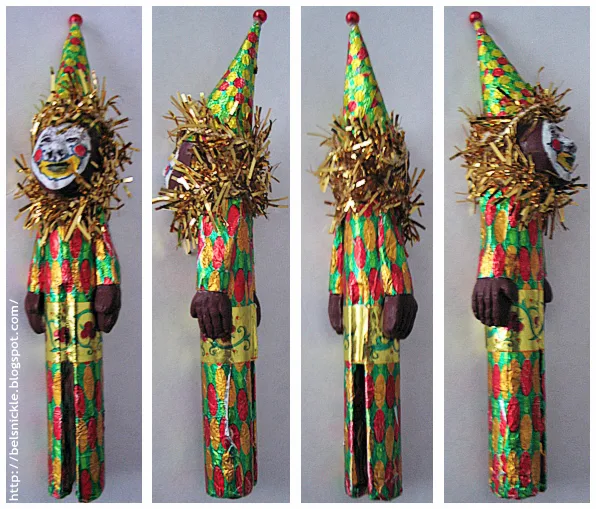 |
| This candy cone measure approximately 12 inches in length. |
This the first candy cone that I made from CelluClay. I fashioned it on top of a prefabricated cone purchased from a hobby store. Although I could have made the cone myself, I thought perhaps it more important that the cone be made of a much heavier paper mache form. CelluClay dries light weight but is quite heavy when first applied. I didn't want the thickness of the medium to alter the shape of the cone before it dried. It took several weeks for the CelluClay to dry naturally because I did not make my earliest ornaments from this series in the summer. Through trail and error I would conclude to sculpt with CelluClay during the hot summer months only.
I shaped the ridges of the Belznickle's beard with a toothpick. His features were painted with acrylic paints and then I varnished the surface of my candy cone with a wood floor varnish. I also finished the inside of the cone with CelluClay and painted it a bright red. (not shown) The cone itself is relatively light weight but it often contains heavier candies over the holidays. This is the reason for the thick wire handle.
More ornaments made with CelluClay:
More ornaments made with CelluClay:








